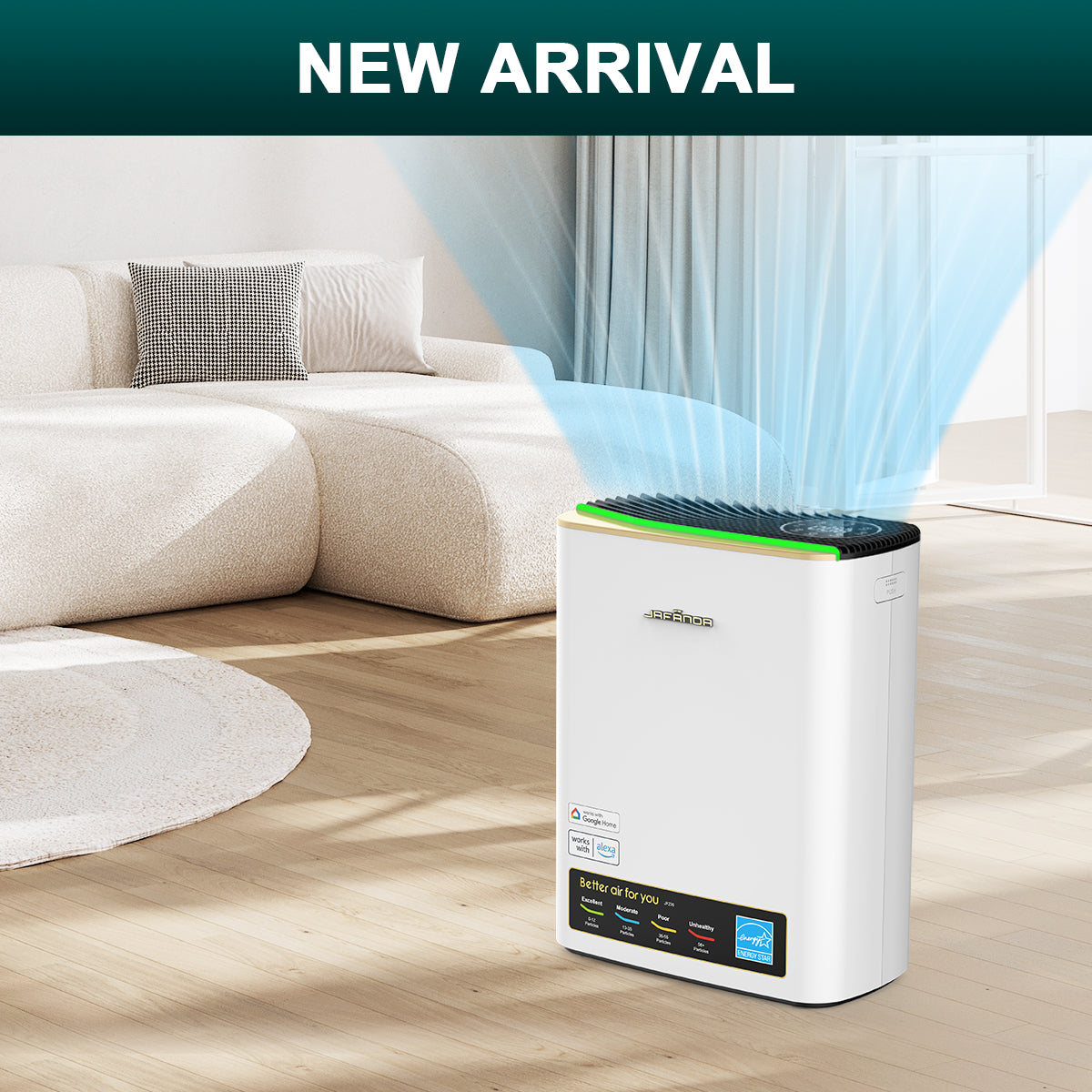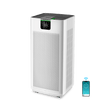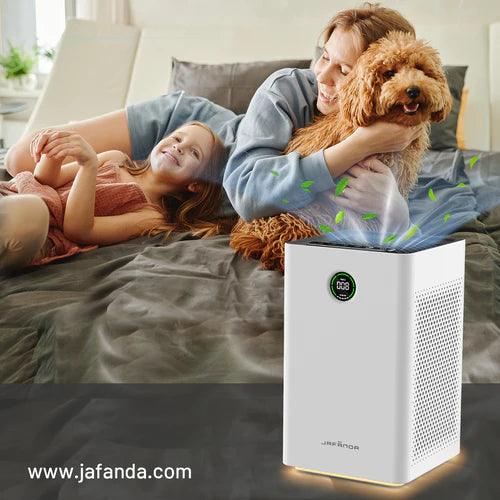As the arrival of wildfire smoke may significantly impact the air quality in homes, it is crucial to select appropriate air purifiers and use them correctly to safeguard the health of you and your family. Here are some practical guidelines to help you maximize the use of air purifiers during periods of smoke pollution and protect your family from the effects of air pollution.
Selecting the Right Air Purifier(outlet JF260 air purifier suppliers): When choosing an air purifier(China purifier factory Jafanda), consider your family's needs and the size of the space you want to cover. Determine the coverage area and check the Clean Air Delivery Rate (CADR) of the air purifier to ensure it is suitable for your room size. Additionally, understand the filtration system of the air purifier to ensure it effectively removes particles and volatile organic compounds (VOCs) present in smoke.
Placement of Air Purifier: Proper placement of the air purifier in the areas that require purification is crucial. Typically, place the air purifier in frequently used areas such as the living room or bedroom to maximize its effectiveness. Ensure the air intake and outlet of the purifier are not obstructed and place it in a location with good air circulation to allow for efficient circulation and filtration of indoor air.
Follow the User Manual: Each air purifier comes with specific user instructions. It is essential to read and follow the user manual carefully. Understand how to start, set up, and operate the air purifier correctly, as well as the recommended time and method for filter replacement. Additionally, ensure regular cleaning and maintenance of different components of the air purifier to maintain its proper functioning and high filtration efficiency.
Continuous Operation of Air Purifier: During the period of wildfire smoke, the air quality may continuously deteriorate. To maintain optimal indoor air purification, it is recommended to keep the air purifier running continuously. Run the air purifier for 24 hours, if possible, to ensure continuous filtration of pollutants present in the smoke. If you are concerned about energy consumption, you can switch the air purifier to silent mode during the night or use a lower fan speed.
Regular Filter Replacement: The filter is a critical component of an air purifier and needs regular replacement to maintain optimum filtration efficiency. Check the filter status regularly and replace it on time according to the manufacturer's recommendations and usage conditions. The lifespan of the filter may vary depending on the level of pollution and frequency of use, so closely monitor the filter's condition and replace it promptly to ensure the air purifier's efficient operation.
Maintain Clean Indoor Environment: While air purifiers help in purifying indoor air, it is equally important to maintain a clean indoor environment. Regularly clean surfaces, floors, and furniture to reduce dust and particle accumulation. Avoid smoking and generating smoke during cooking, as well as using chemical cleaners and harmful substances. These measures help reduce indoor pollution sources and work in conjunction with the air purifier to create a cleaner indoor environment for your family.
By selecting the appropriate air purifiers and using them correctly, we can maximize the protection of our families from smoke pollution. Remember to choose the right purifier, place it correctly, follow the user manual, run the purifier continuously, regularly replace filters, and maintain a clean indoor environment. These measures will help you make the most of your air purifier and protect your family's health.











Leave a comment
All comments are moderated before being published.
This site is protected by hCaptcha and the hCaptcha Privacy Policy and Terms of Service apply.